Next Day Delivery Available
Fixing a washing machine that won't drain
The 5 most common reasons that your washing machine won't drain are:
In this video article we'll go through each one in detail and give you the tips and advice on how to fix the problem.
We'll also discuss how to empty your washing machine if it is full of water and won't drain.
Unbalanced load
An 'out of balance' detection system is fitted to washing machines and is designed to stop the washing machine from spinning in these circumstances. This could mean that if your washing machine is overloaded, or indeed underloaded, it might not progress through to the end of the cycle and remain full of water. If this is the case see below how to empty your washing machine if it is full of water and won't drain.
Blocked filter
Many washing machines have fiters that need cleaning regularly. If not cleaned the filter can become blocked and prevent water from flowing in to the washing machine drainage system. We have several help videos on how to clean your washing machine filter:
How to clean the filter on a Zanussi washing machine
How to clean the filter on a Candy washing machine
How to clean the filter on a Indesit washing machine
How to clean the filter on a Hotpoint washing machine
Blocked or Kinked Waste Hose
A common reason for your washing machine not emptying is the waste hose is either blocked, or more often kinked. Where the washing machine has been pushed back in to it's housing the hose can become kinked over time. You will need to inspect the drain hose at the rear of the washing machine. If it is kinked it may need replacing. To test if it is blocked put the end of the hose in to a container that is at ground level. Water should flow out of the drain hose due to gravity, if it doesn't the you know you have a blockage somewhere between the drum and the drain hose.
Blocked sump hose
Less common is the washing machine sump hose could have become blocked. This can happen when a sock or other small item of clothing has managed to get between the drum and the outer tub. It will not be able to pass through the sump hose and become stuck and block any water flow.
Faulty Pump
If the pump becomes faulty the washing machine will not empty. The washing machine water detection system will prevent the washing machine from spinning.
See our step by step guide on:
how to replace a faulty washing machine pump
How to empty your washing machine
So, before you start forcing the door open you need to get rid of the water that’s inside the washing machine and there is a process to follow in order to do this.
Empty via the drain hose
The first step is to attempt to drain the water out of the machine via the drain hose. To do this all we need to do is place the outlet of the hose in to a bowl or other container. As long as the hose is placed lower than the drum then gravity will take over and the water will drain out.
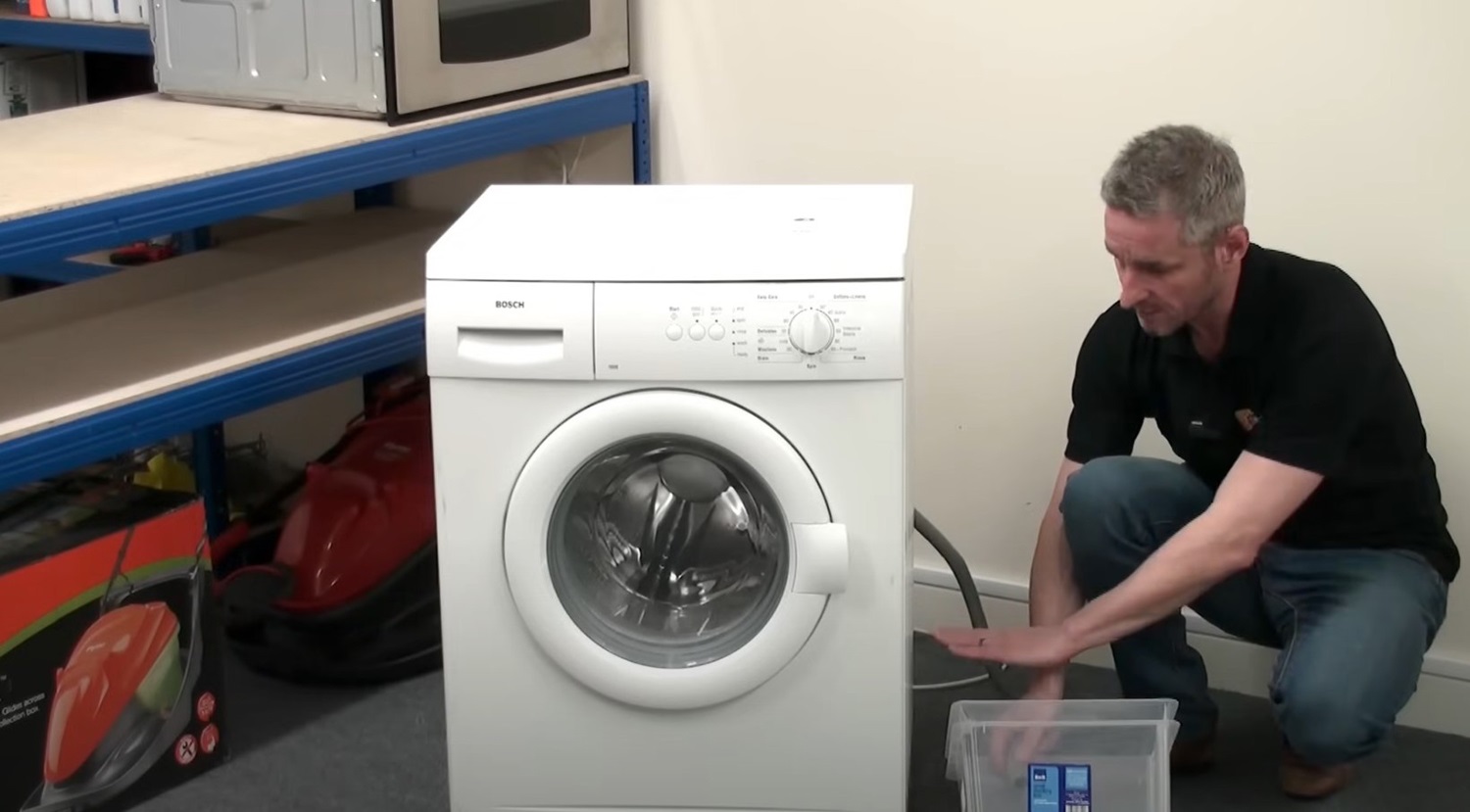
Empty via the filter
On some machines the drain hose is routed up above the drum as on this machine and so it’s not possible to drain the water in this way.
If your machine has this sort or drain hose set up or if water doesn’t drain from the drain hose then the next step is to try and drain the machine via the filter if your washing machine has one. We need to tilt the machine slightly backwards and with a bowl and some towels on stand-by slowly unscrew the filter. Water should start to flow in to the bowl. When the bowl is full simply tighten the filter and empty the bowl. Repeat this until there is no water left in the machine. Because the machine didn’t empty via the drain hose, but did empty via the filter it confirms that the blockage must be in the drain hose.
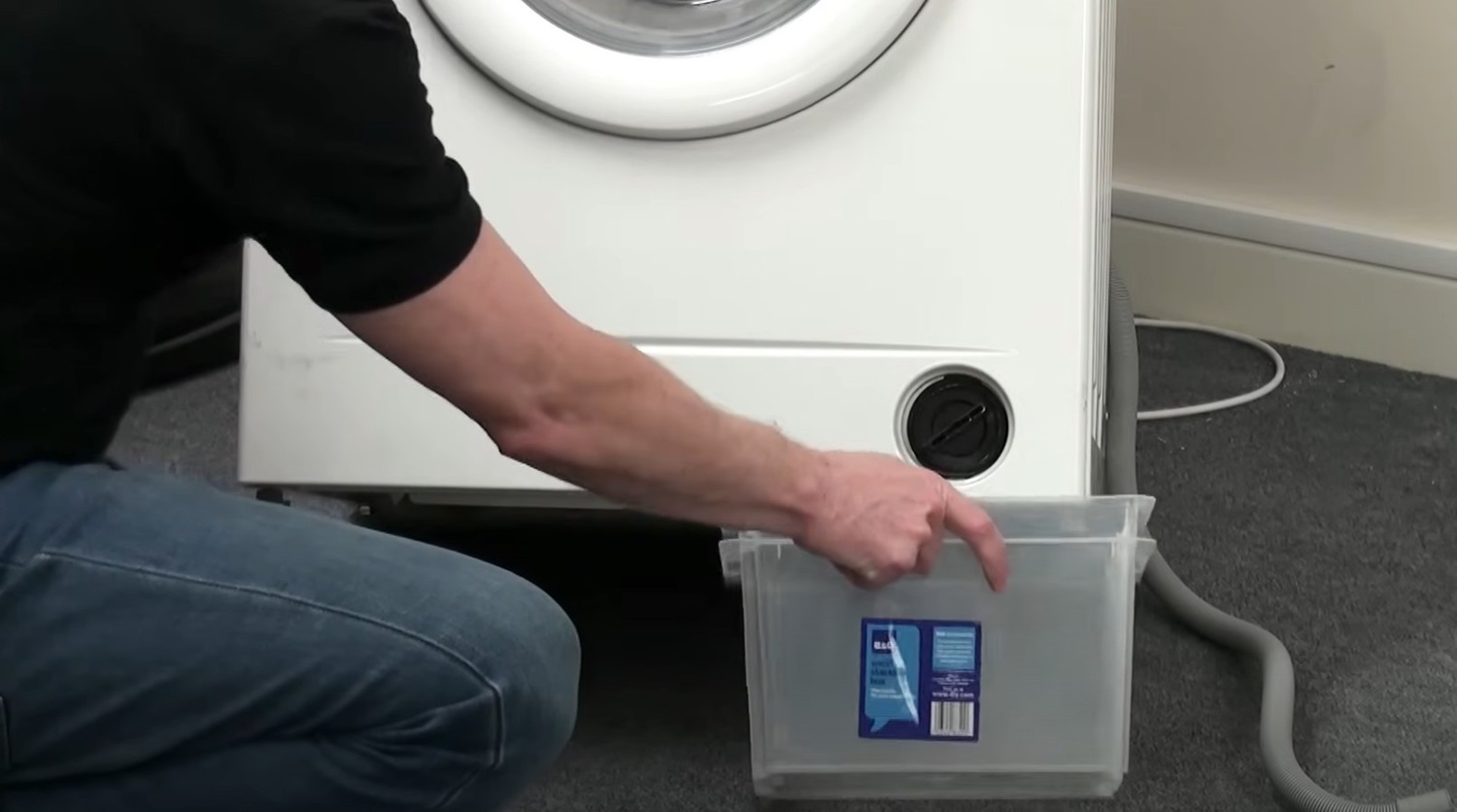
Empty via the sump hose
If again water fails to drain from the filter then the blockage must be in the sump hose, which is the hose that normally connects from the bottom of the drum to the pump.
We need to tilt the machine on to its back laying it down on to some towels. We also need to lay some towels around where the sump hose connect to catch any water that leaks when we disconnect the hose. First slowly disconnect the sump hose to pump connection and allow any water to drain out, and secondly disconnect the sump hose to drum connection and again be ready for any water. We now need to remove the blockage and replace the sump hose.
Once the water had been drained out the door of the washing machine should now open. Just make sure that either the blockage has been removed or the drain pump has been replaced before you use your washing machine again!
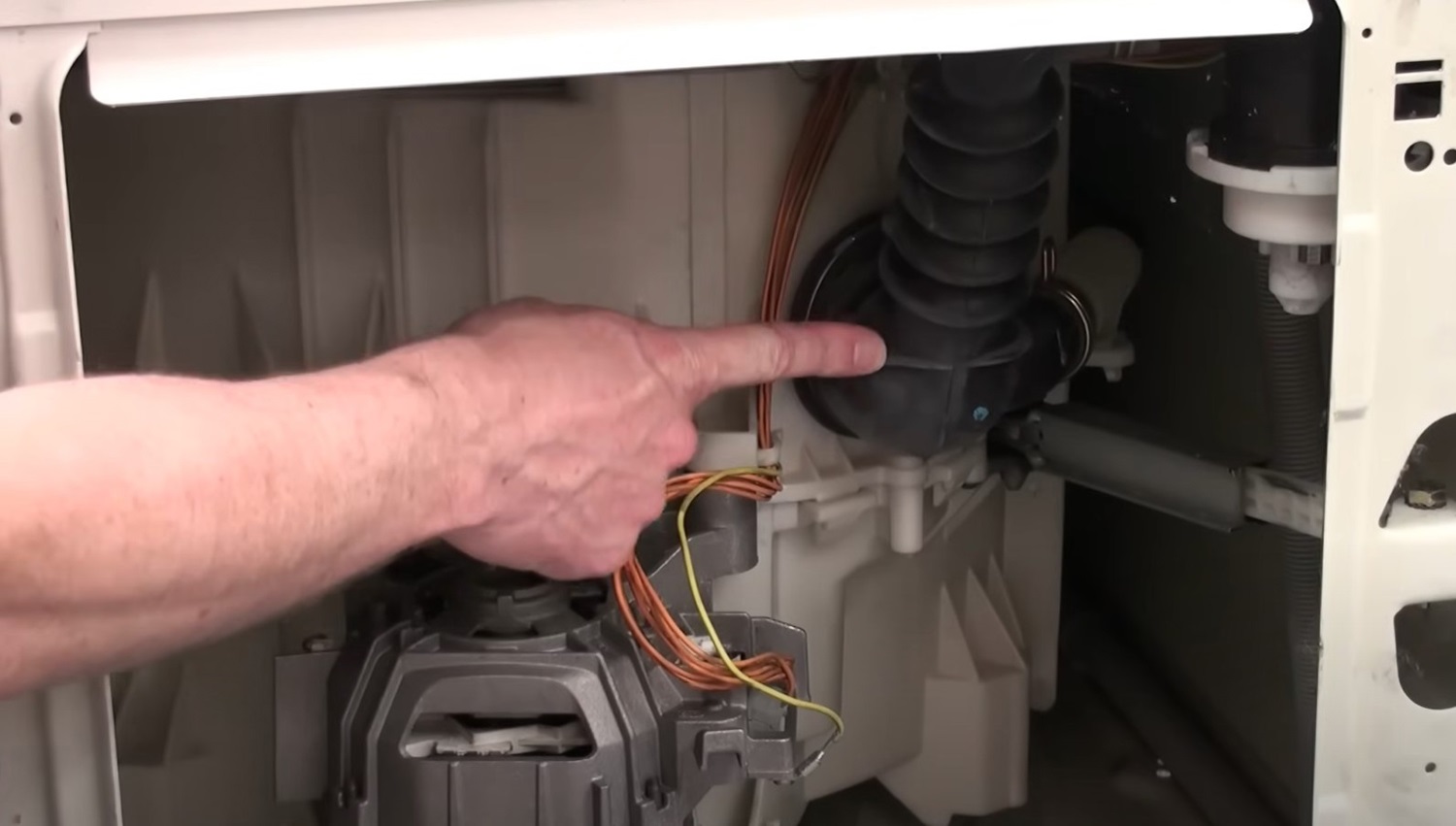
Open the washing machine door and test
Now the water has been remove from the washing machine the door should operate and open normally. You should now test the washing machine by putting it on a wash cycle. Once the washing machine has filled with water you can switch to a spin or drain cycle to make sure that the washing machine is now emptying as expected.
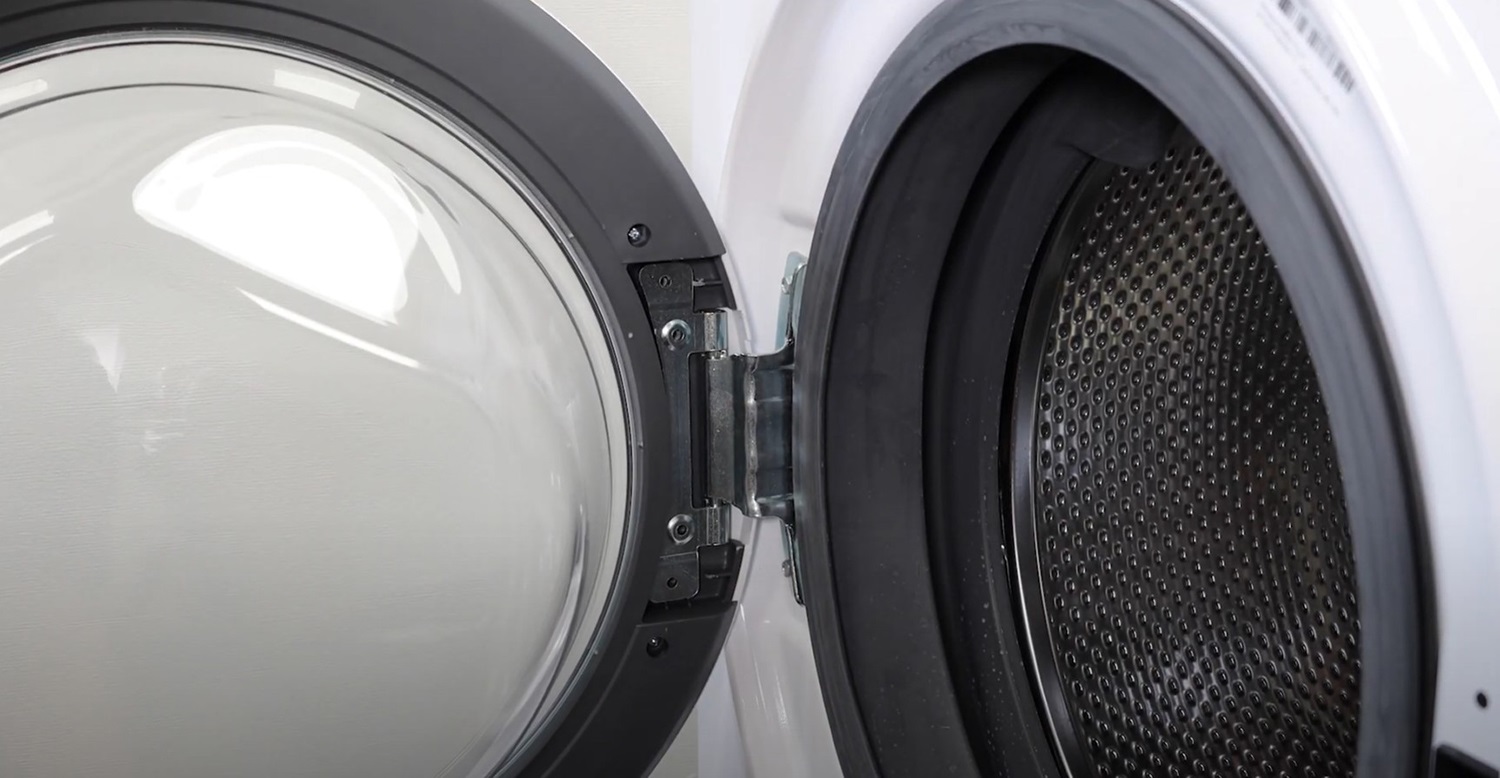
Washing Machine is still not emptying
So, you've emptied the water from your washing machine and opened the door. If when you next do your washing the washing machine fails to empty again then the fault is likely to be your washing machine pump. Check out our related videos below on:
how to replace your washing machine pump
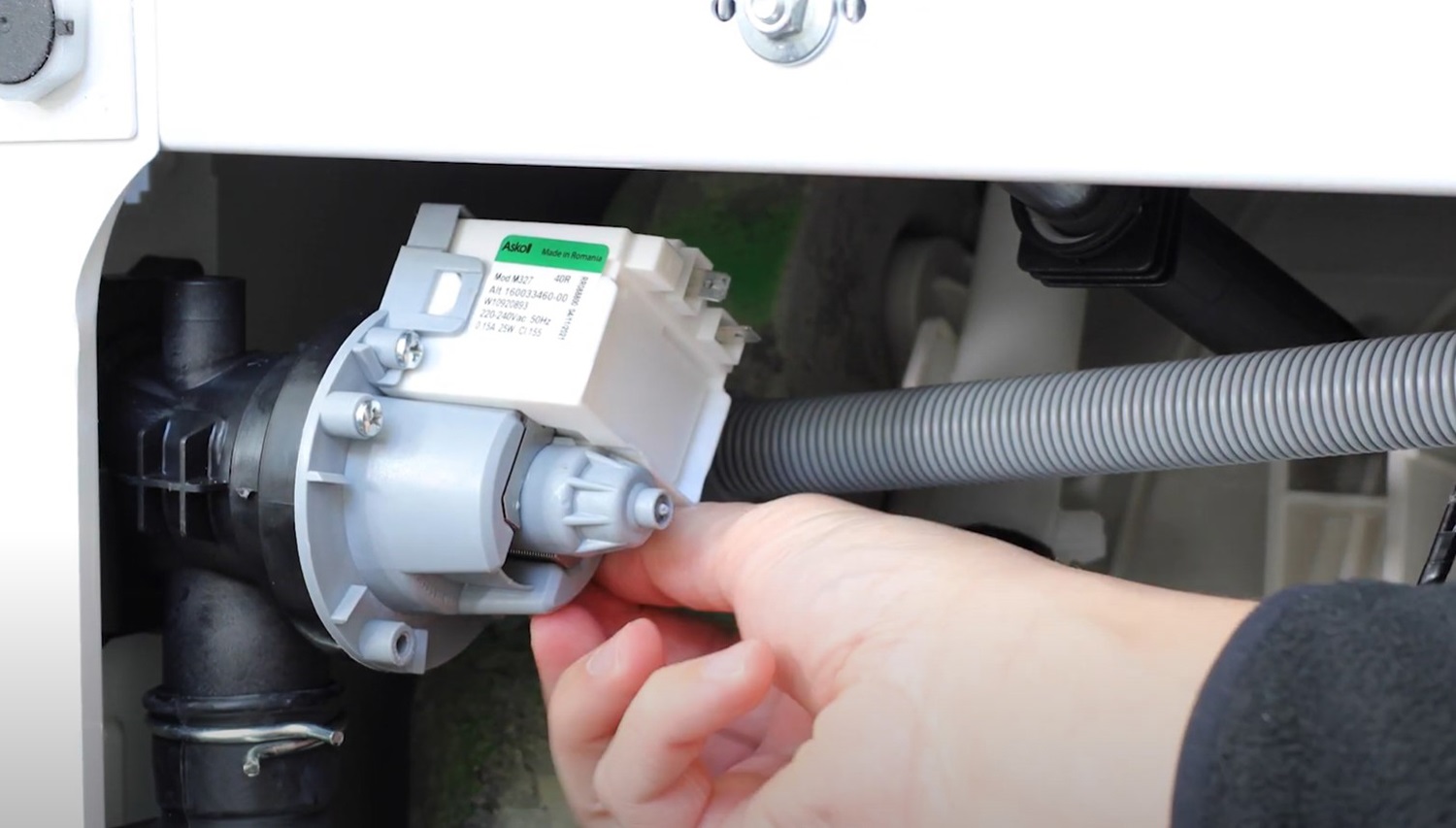







 Lee Gilbert
Lee Gilbert  30th Aug 2024 at 12:27
30th Aug 2024 at 12:27

